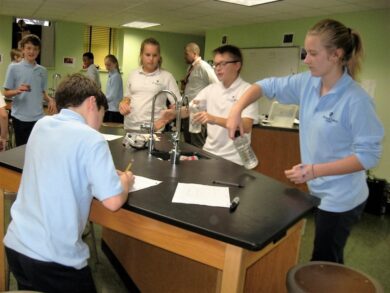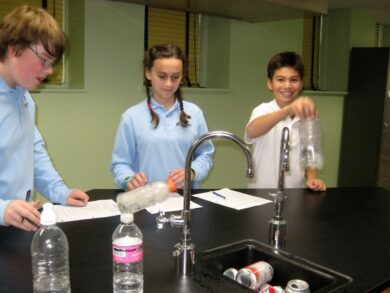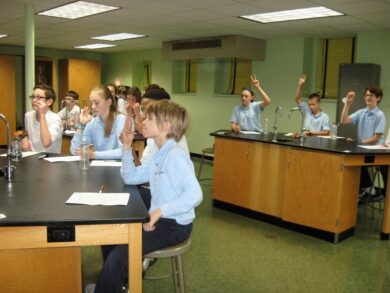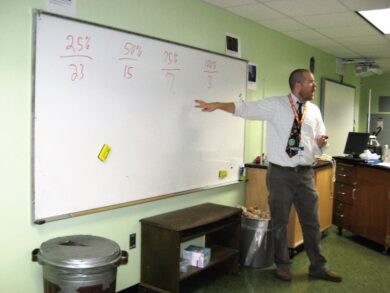About the only place at MCS that bottle flipping is not only allowed but is encouraged is in Mark Pendergrass’ 7th grade science class. Recognizing a fad that has spread world-wide, the science teacher also saw the possibility of teaching the concepts of fluid dynamics, momentum and centrifugal force and gravity.
After collecting water bottles from a multitude of places (these bottles are not allowed at MCS – students provide their own bottles and keep them filled at the school’s water fountains), Mark gave each set of partners an empty bottle and told them that they would add water to the bottle,, toss the bottle and get it to land on its bottom. This would be followed by some data collecting.
After some additional instruction such as tossing the bottle with one rotation, the students were given a chart and were asked to flip the bottle 4 times, once each after water was added at the 25% mark, 50% mark 75% and full and to record the results on the chart. After each group had concluded the activity, Mark, asking for a show of fingers, recorded the class-wide results of the activity. It was discovered that the bottles which were 25% full had the best chance of landing upright. A class discussion followed whereby it was concluded that although the momentum was the same for the top and bottom of the bottle, the bottom had the mass needed to benefit from the pull of gravity.
The bell, which seemed to ring earlier than usual, concluded a class that had introduced some concepts on which the students would be able to build as the year progressed.
The normal clunk and thump of the bottles had been pretty much absorbed by the laboratory tables with their laminate tops – a possible but impractical solution for parents becoming sound-weary as their teens practice this latest non-digital activity.
Sister Joanne LaFreniere, RSM
Director of Public Relations and Spiritual Life




